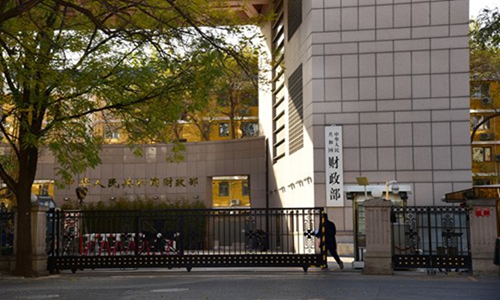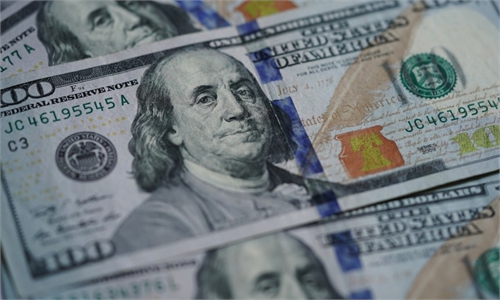
Ministry of Finance in Beijing Photo: VCG
Seven Chinese provinces said they have completed or completed ahead of schedule their annual goal in dissolving hidden debt - arrears made beyond legally issued local debt, in their 2022 debt reports, according to a media report.
Financial experts said the progress is the result of more stringent governance on related entities as the relationship between the government and companies become increasingly regulated.
But they warned stricter oversight is needed to keep the pressure over the issue as local government borrowings expand to fuel an economic recovery, following the optimization of pandemic response late last year.
According to a report by 21jingji.com on Wednesday, a total of seven localities have said they have completed their annual goal in removing hidden debt as all 31 localities in the Chinese mainland published their government budget implementation reports.
Some localities disclosed their progress, with South China's Guangdong Province and Beijing announcing they have disposed of all hidden debts and South China's Guangxi Province and Northwest China's Ningxia Hui Autonomous Region stating that they have cleared over 50 percent, per the report.
The number of localities completing their hidden debt reduction target was seven in 2022, up from five in 2021, the report said.
Hidden debts refer to the borrowings made by local governments beyond their legal debt ceiling. Borrowings are made by entities such as local government financing vehicles.
Dong Dengxin, director of the Finance and Securities Institute of the Wuhan University of Science and Technology, told the Global Times on Wednesday that in recent years the government has tightened its grip on violators.
There has been improved governance over hidden debts, though there is need to keep the grip tight, especially during the post-pandemic period, Dong said.
Since 2018, localities began to slash their levels of hidden debt.
In December, China's Finance Minister Liu Kun wrote in an article that in recent years, by adhering the bottom-line thinking, China has slashed hidden debt across local government by more than one third, and has kept outstanding government debt at below 50 percent of GDP, creating ample room for coping with new challenges.
In 2022, growth in investment once again became the main driver for China's GDP growth. Its share of contribution to GDP growth surpassed 50 percent, the first time in more than over a decade.
The tone-setting annual Central Economic Work Conference held last December made three references to risks linked to managing local government debt.
East China's Fujian Province said that it will resolutely curb local government's hidden debt in its annual budget report, according to a statement published on February 3.
Experts warned the government should keep the pressure on local governments in the coming months. Ye Qing, a professor at Wuhan-based Zhongnan University of Economics and Law, told the Global Times on Wednesday that now every province is rolling up sleeves to make up for setbacks incurred during the pandemic but many localities are facing budgetary challenges.
According to a local government debt reports, localities outlaid significant fiscal resources on the pandemic response, PCR testing and inoculations.



